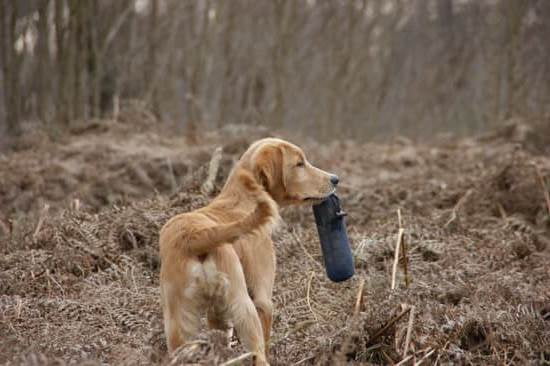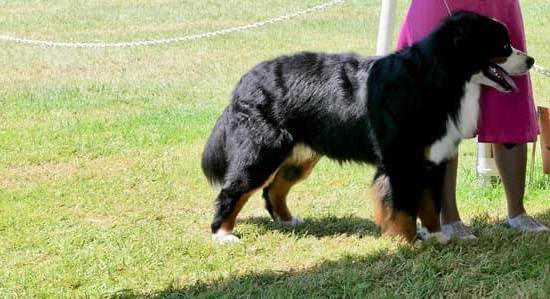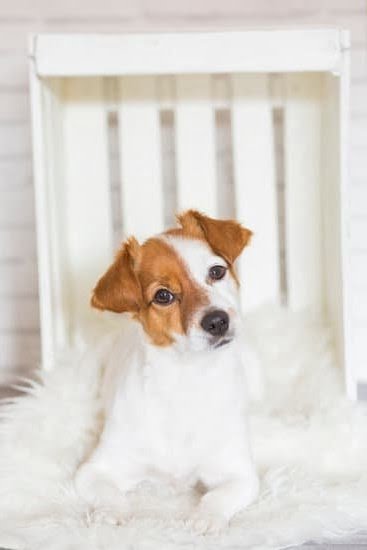Training a dog to go potty on a pad can be a convenient and practical solution for pet owners, especially those who live in apartments or have busy schedules. Many dog owners wonder how to train a dog to go on a pad effectively, and it all starts with understanding the basics of pad training.
By introducing the concept of using a designated area for your dog to go potty indoors, you can eliminate the need for frequent outdoor bathroom trips.
When it comes to training your dog to use a pad, there are numerous benefits worth considering. Not only does it provide a convenient option for dogs who may not have easy access to outdoor spaces, but it also helps in situations where weather conditions may not be ideal for outdoor walks.
Additionally, teaching your dog to go on a pad can be particularly helpful for puppies who are still developing bladder control and senior dogs who may have difficulty holding it in between outdoor breaks.
In order to successfully train your dog to go on a pad, it is essential to choose the right type of pad that suits your pet’s needs and preferences. Whether you opt for disposable pads or washable reusable options, selecting the appropriate size and absorbency level is crucial. Setting up a designated area in your home where the pad will be placed consistently is also key in establishing a routine that your dog can follow easily.
Benefits of Teaching a Dog to Go Potty on a Pad
When it comes to training a dog to go potty on a pad, there are numerous benefits that both you and your furry companion can enjoy. One of the main advantages is the convenience factor.
By teaching your dog to use a pad indoors, you eliminate the need for frequent outdoor trips, especially in situations where the weather may be inclement or if you live in an apartment without immediate access to a yard. This can be particularly helpful for individuals with busy schedules or limited mobility.
Reduction of Messes and Accidents
Another significant benefit of training your dog to go on a pad is the reduction of messes and accidents inside your home. Pads provide a designated area for your pet to relieve themselves, which helps contain any potential spills or accidents. This not only saves you time and effort in cleaning up after your dog but also minimizes damage to carpets, floors, and furniture.
Flexibility in Training Methods
Teaching your dog to use a pad also offers flexibility in training methods. Whether you have a new puppy or an older dog learning new habits, pads can be useful tools in teaching them where it is appropriate to potty. With various types of pads available on the market, such as scented pads or grass-like designs, you can choose one that best suits your dog’s preferences and needs.
Additionally, pads come in different sizes, making them adaptable for dogs of all breeds and sizes. By incorporating positive reinforcement techniques into your training routine, you can effectively teach your dog how to go on a pad while strengthening your bond with them.
Choosing the Right Type of Pad for Your Dog
When it comes to training a dog to go on a pad, choosing the right type of pad is crucial in the success of this training method. There are various options available in the market, each catering to different needs and preferences. Here are some factors to consider when selecting a pad for your furry friend:
- Size: Make sure to choose a pad that is appropriate for the size of your dog. Larger dogs may require bigger pads to ensure they have enough space to do their business comfortably.
- Material: Pads come in different materials such as paper, cloth, or synthetic grass. Consider which material would be most suitable for your dog’s habits and preferences.
- Odor control: Look for pads with odor-neutralizing properties to help keep your home smelling fresh and clean even after your dog uses the pad.
Once you have chosen the right type of pad for your dog, it’s important to set up a designated area in your home where the pad will be placed. This area should be easily accessible to your dog and away from their food and sleeping areas. Consistency is key when it comes to training your dog, so make sure this spot remains the same throughout the training process.
In addition to selecting the appropriate pad and setting up a specific location for it, you may also want to consider using attractants to encourage your dog to use the pad. These can come in the form of sprays or drops that mimic scents that dogs are naturally drawn to when they need to go potty. By incorporating attractants into your training routine, you can further reinforce the behavior of using the pad.
Setting Up a Designated Area for the Pad in Your Home
When it comes to training your dog to go on a pad, setting up a designated area in your home is essential for success. Choosing the right location for the pad will help establish consistency and make it easier for your furry friend to understand where they should do their business. Here are some key tips on creating the perfect spot for your dog’s potty needs.
Choosing the Right Spot
Consider selecting an easily accessible area in your home that is quiet and away from distractions. Avoid placing the pad near their food and water bowls, as dogs naturally prefer to keep their eating and elimination areas separate. Additionally, choose a location that is easy to clean in case of accidents.
Creating a Comfortable Environment
Make the designated area inviting for your dog by adding some familiar scents, such as their favorite toys or blankets. Ensure that the pad is placed on a stable surface and doesn’t move around easily to prevent accidents. Dogs thrive on routine, so having a consistent location for the pad will help them associate it with their potty needs.
Making It Accessible
If you have a larger home or multiple floors, consider placing pads in different areas where your dog spends most of their time. This way, they always have quick access to a designated spot when needed. Remember, patience is key when training your dog to use a pad, so be consistent and reward them for successful potty behavior.
By following these steps and creating an ideal environment for your furry companion’s potty needs, you’ll be well on your way to successfully training your dog how to go on a pad. With consistency, positive reinforcement, and lots of love and patience, you can help your pet learn this essential skill while maintaining cleanliness within your home.
Creating a Consistent Routine for Your Dog to Follow
Establishing a consistent routine is crucial when training your dog to go on a pad. Dogs thrive on routine and structure, so it’s important to set specific times for potty breaks throughout the day.
Start by taking your dog to the pad first thing in the morning, after meals, before bedtime, and any time you notice signs that they need to go. Consistency is key to reinforcing the desired behavior and helping your dog understand where they should relieve themselves.
In addition to regular potty breaks, consistency also means using verbal cues or commands when guiding your dog to the pad. Choose a specific command such as “go potty” or “potty time” whenever you lead them to the designated area. This will help them associate the command with the action of using the pad. Over time, your dog will learn to respond to these cues and understand what is expected of them.
Another important aspect of creating a consistent routine is monitoring your dog’s behavior and body language. Pay attention to signs that indicate they need to go, such as sniffing around or circling a particular spot. By being observant and responsive to these cues, you can effectively guide your dog to the pad at the right times. Remember, patience is key in this process as every dog learns at their own pace.
| Key Points | Data |
|---|---|
| Consistent Routine | Setting specific times for potty breaks throughout the day. |
| Verbal Cues | Using specific commands like “go potty” or “potty time” when leading them to the pad. |
| Monitoring Behavior | Paying attention to signs that indicate your dog needs to go. |
Using Positive Reinforcement Techniques During Training
When it comes to training a dog to go on a pad, using positive reinforcement techniques can be highly effective. Positive reinforcement involves rewarding your dog for good behavior, such as using the pad appropriately. This can be done through treats, verbal praise, or even playtime. By associating going potty on the pad with positive rewards, your dog is more likely to repeat this behavior.
One way to implement positive reinforcement is by giving your dog a treat immediately after they use the pad. Make sure the treat is something your dog loves and only give it to them in this specific context. You can also use verbal cues like “good job” or “well done” to further reinforce the behavior. Consistency is key when using positive reinforcement, so make sure to reward your dog every time they use the pad correctly.
Another important aspect of positive reinforcement is timing. It’s crucial to reward your dog immediately after they go potty on the pad so they can make a clear connection between the behavior and the reward. Remember that patience and consistency are key when training a dog to go on a pad, and positive reinforcement can make the process more enjoyable for both you and your furry friend.
| Positive Reinforcement Technique | Effectiveness |
|---|---|
| Rewarding with treats | Highly effective in reinforcing desired behavior |
| Using verbal praise | Helps strengthen the bond between you and your dog |
| Immediate rewards | Assists in creating a clear association between behavior and reward |
Troubleshooting Common Challenges in Pad Training
Training a dog to go on a pad can sometimes come with its own set of challenges. It is essential to address these obstacles effectively to ensure successful pad training. Here are some common issues that dog owners may face while attempting to train their furry companions:
- Resistance: Some dogs may initially resist using the pad for potty purposes. To overcome this, try gradually introducing the pad in a positive manner. Place the pad in an area where your dog usually goes potty and reward them when they use it.
- Accidents: Accidents are bound to happen during the training process. If your dog has an accident outside of the designated pad area, do not scold them. Instead, clean up the mess thoroughly and continue with consistent training.
- Confusion: Dogs may get confused about when and where they are supposed to use the potty pad. To combat this confusion, establish a strict routine for your dog’s potty breaks and consistently direct them towards the designated pad area.
Patience and persistence are key when troubleshooting common challenges in pad training. Remember that every dog is different, and it may take time for your furry friend to fully grasp the concept of using a potty pad.
Gradually Transitioning Your Dog From Pads to Outdoor Potty Breaks
When your dog has successfully learned to go on a potty pad indoors, you may want to transition them to relieving themselves outdoors. This process should be gradual to avoid confusion or setbacks in their potty habits.
- Begin by moving the potty pad closer and closer to the door leading outside.
- Once your dog is consistently using the pad near the door, start placing it right outside.
- Accompany your dog outside and encourage them to use the restroom on grass or soil instead of the pad.
Through gradual transition and positive reinforcement, your furry companion will eventually learn how to go potty outside as well as on a designated pad indoors. Remember, consistency is key throughout this process.
Gradually Transitioning Your Dog From Pads to Outdoor Potty Breaks
Transitioning your dog from using pads indoors to going potty outside is an important step in their development and training. While pads can be a convenient solution, encouraging your dog to eliminate outdoors is beneficial for both them and you. Here are some tips on how to successfully make this transition.
Firstly, start by gradually moving the pad closer and closer to the door that leads outside. This will help your dog associate the act of going potty with being near the outdoor area. Once they consistently use the pad near the door, start taking them outside at regular intervals, such as after meals or naps. Use the same verbal cues and positive reinforcement techniques that you used during pad training to encourage them to go potty outside.
Another important aspect of transitioning your dog from pads to outdoor potty breaks is being patient and understanding. Dogs may take some time to adjust to the new routine, so it’s essential to remain consistent and provide encouragement throughout the process. Remember that accidents may happen, but it’s crucial not to scold or punish your dog as this can create a negative association with going potty outside.
As your dog becomes more comfortable with going potty outdoors, gradually reduce the number of pads in your home until they are completely reliant on outdoor breaks. Celebrate each successful outdoor potty break with praise and treats to reinforce their good behavior. With patience, consistency, and positive reinforcement, you can successfully train your dog to go on a pad indoors and eventually transition them to outdoor potty breaks.
Tips for Maintaining Good Hygiene and Cleanliness With Pad Training
Maintaining good hygiene and cleanliness is essential when training your dog to go on a pad. This will not only keep your home clean but also help reinforce positive behaviors in your furry friend. Here are some tips to ensure a sanitary environment during the pad training process.
First and foremost, it’s crucial to regularly change the potty pads. Depending on how often your dog uses them, you may need to replace them multiple times a day. Leaving soiled pads out can lead to unpleasant odors and an unhygienic living space. By keeping the pads fresh, you are promoting a clean environment for your dog to continue using them effectively.
In addition to changing the pads frequently, you should also clean the designated area where the pads are placed. Using pet-safe cleaning products, thoroughly disinfect the floor or any surfaces around the pad to eliminate any lingering odors or bacteria. This step not only provides a clean space for your dog but also helps prevent accidents outside of the designated area.
Furthermore, encourage good habits by rewarding your dog with praise or treats every time they successfully use the pad. Positive reinforcement is key in training dogs, as it helps them associate going potty in the right spot with positive outcomes. Consistency in praising good behavior will motivate your dog to continue using the pad properly. With patience and dedication, you can successfully maintain hygiene and cleanliness while training your dog to go on a pad.
Conclusion
In conclusion, training a dog to use a pad can be a convenient and effective solution for both pet owners and their furry companions. By following the steps outlined in this article on how to train a dog to go on a pad, you can create a designated area in your home for your dog to relieve themselves, ultimately reducing accidents and messes while providing flexibility for those with busy schedules or limited outdoor access.
One of the key benefits of teaching your dog to use a pad is the convenience it offers, especially during harsh weather conditions or when living in an apartment or high-rise building. By choosing the right type of pad for your dog and creating a consistent routine, you can effectively communicate where your pet should go potty. Remember to always use positive reinforcement techniques during training, as this will help motivate your dog and strengthen the bond between you.
While some challenges may arise during the pad training process, such as accidents or resistance from your dog, patience and persistence are key. By troubleshooting these issues and gradually transitioning your dog from pads to outdoor potty breaks, you can successfully achieve reliable potty habits.
Maintaining good hygiene and cleanliness with pad training is also essential, so be sure to regularly clean and replace pads as needed. With dedication and commitment, you can help your furry friend master using a pad and enjoy the benefits of this convenient potty solution.
Frequently Asked Questions
How Do I Train My Dog to Pee on a Pad?
Training your dog to pee on a pad requires consistency and patience. Start by placing the pad in a designated spot and taking your dog to it frequently, especially after meals or naps. Use positive reinforcement such as treats and praise when your dog uses the pad successfully.
How Do I Attract My Dog to Pee Pad?
To attract your dog to a pee pad, you can use scent attractants specifically designed for this purpose. Place a small amount of the attractant on the pad to encourage your dog to use it. Additionally, you can also try placing some of your dog’s urine on the pad to signal that it is an appropriate spot for elimination.
How Long Does It Take for a Dog to Be Pad Trained?
The time it takes for a dog to be fully pad trained varies depending on the individual dog and consistency of training. Some dogs may pick up on using the pads quickly within a few weeks, while others may take longer.
Generally, with consistent training and positive reinforcement, most dogs can be trained to use pee pads within 4-6 weeks. Remember that accidents may happen during the training process, so patience is key.

Welcome to the blog! I am a professional dog trainer and have been working with dogs for many years. In this blog, I will be discussing various topics related to dog training, including tips, tricks, and advice. I hope you find this information helpful and informative. Thanks for reading!





